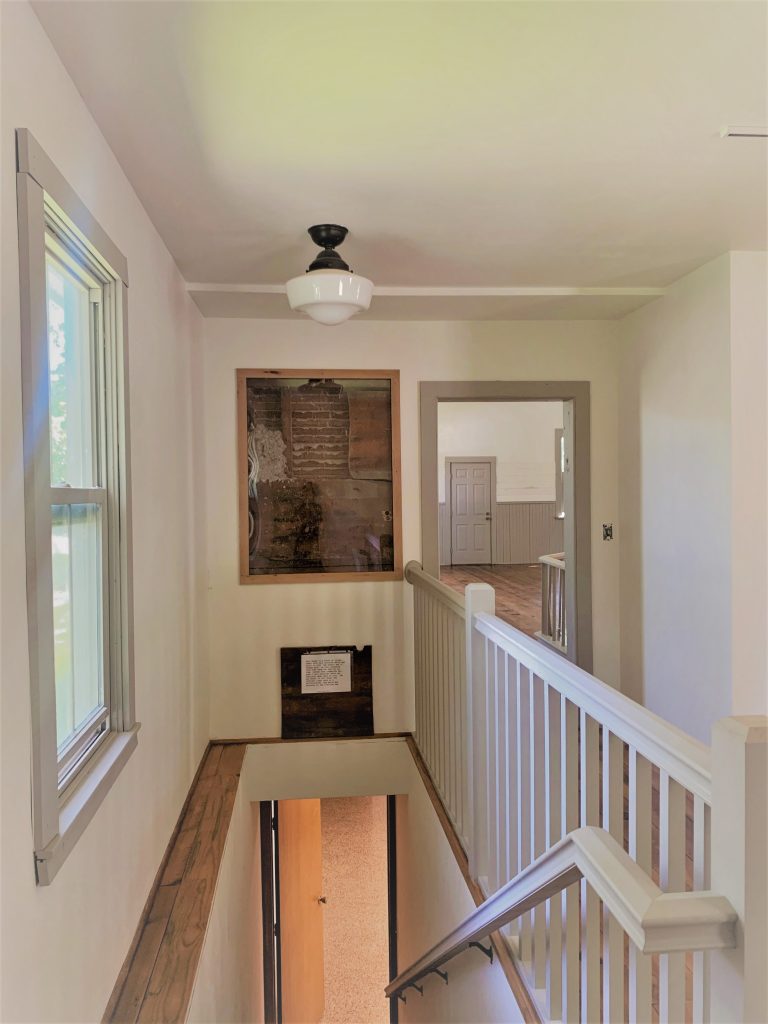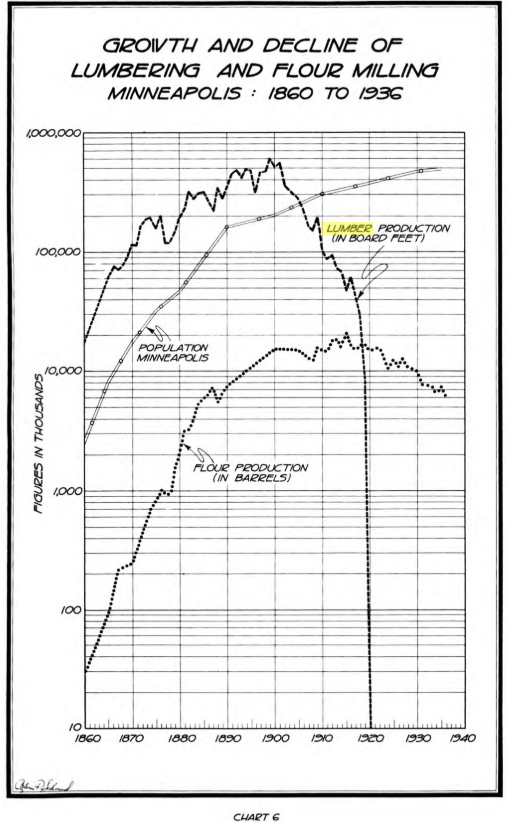Plymouth’s Historic Town Hall: Pt. 3

Through the process of addressing changing needs of the Plymouth History Museum, it became clear the staircase between upper and lower levels needed a rethink. The stairs were obstructed overhead by a large case containing the museum’s taxidermy bird collection. This not only blocked light from entering the staircase but also created a walking hazard for anyone nearing six feet in height! The case was removed and replaced with a sturdy new handrail, returning natural light into the space.
In addition to this renewed light, however, an even better surprise was found. Removing the case revealed an exposed side of the original 1885 town hall. Made of wide-planed timber, this new view gives a literal window into both the history of the building and world of industry and construction in late-nineteenth-century Minnesota.

Photo source: Minnesota Historical Society
Sawmilling in Minnesota has its early origins in St. Anthony Falls, with the first mill built near Fort Snelling in the 1820s and the first commercial mill soon following in 1848. The industry saw major growth through the 1850s following Minnesota’s formation as a territory in 1849. Proximity to the falls and the river allowed for both the power to mill timber as well as transport with relative ease, permitting felled trees from the northern part of the state to float through Minnesota’s many interconnected waterways to Minneapolis for processing. According to a Calvin F. Schmid’s Social Saga of Two Cities (1977), the mills were producing 18,000,000 board feet of lumber in 1860, and by 1899 this had skyrocketed to 594,000,000 feet of lumber.

In St. Anthony Falls, lumber milling was replaced by the flour industry, as Minneapolis quickly established itself as the Flour Milling Capitol of the World. Consequently, sawmills moved up the river into northern parts of Minneapolis, with many making the move between 1870 and 1880. Thus, by the time of the Plymouth Town Hall’s construction, the lumber would have arrived via these mills of northeast Minneapolis. The city continued to be a major producer of lumber, becoming the national leader by 1905. However, unsustainable logging methods led to total depletion of the once pristine forests, resulting in an abrupt end to the once-thriving industry.